4.4 ECONOMY
The Luo are said to have practiced a dual economy, with both farming and cattle-keeping being important. Both cattle, sheep and goats were kept and were used for both food, marriage payment and also for ritual activities such as sacrifice. Both sorghum (bel ) and finger millet (kal ) were important crops.
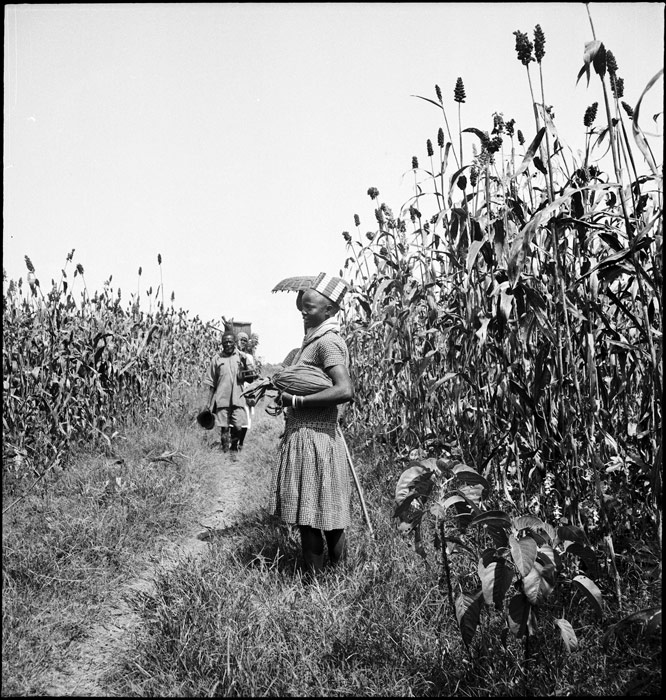
1998.349.230.1
Sorghum (bel ) plantation in Gangu Village, Alego
Evans-Pritchard, 1936
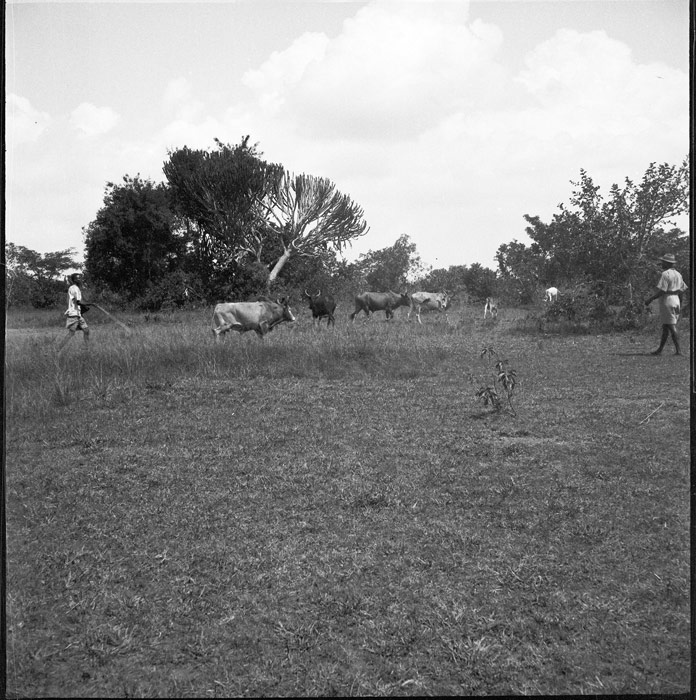
1998.349.237.1
Cattle grazing in Unyolo Village, Alego
Evans-Pritchard, 1936
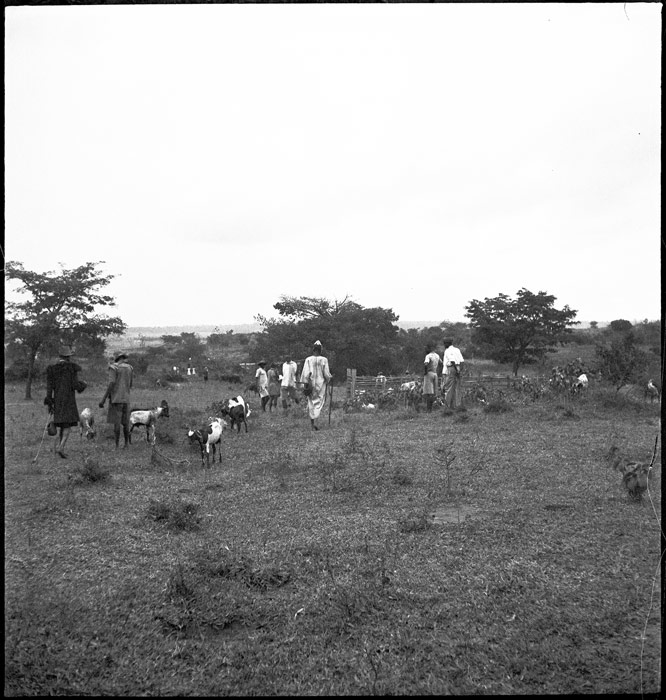
1998.349.240.1
Livestock buying at Amoth Market in Alego
Evans-Pritchard, 1936
More importantly, due to their proximity to the Lake, the Luo were known as fishermen and fish (rech ) was usually the main relish eaten with sorghum. Fishing was usually done by men in the lake but women also trapped fish in shallower waters. Both fish and livestock meat were further supplemented by hunting quill bird (aluru ) or other animals.
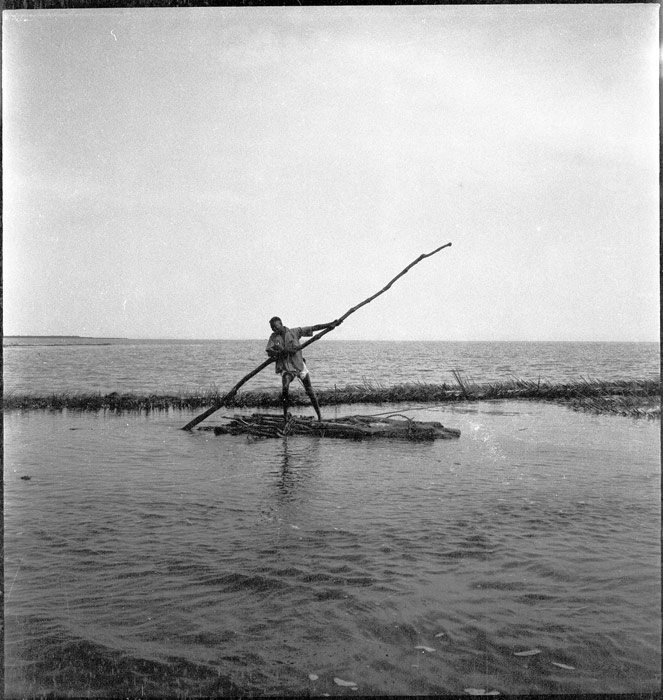
1998.349.3.1
A Luo man punting a raft made of cork wood ( orindi ), used both for fishing and transport on the lake
Evans-Pritchard, 1936
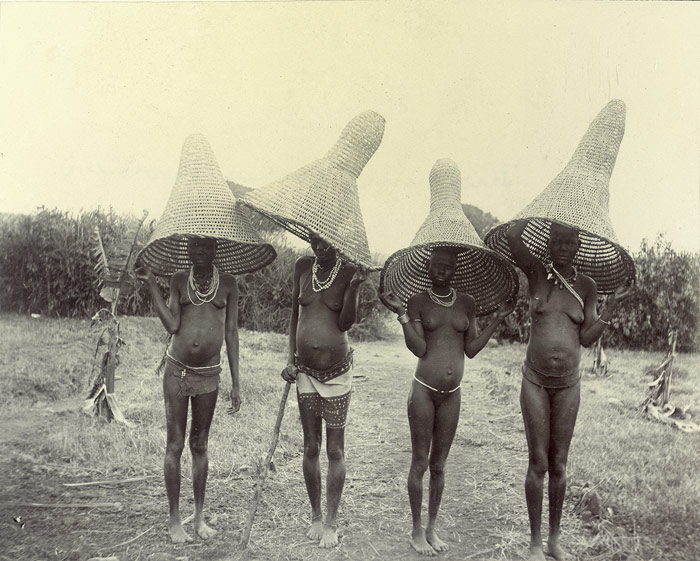
1998.209.44.4
Luo women with basketry fish traps (osech kiteng' )
going to fish in a shallow river water
Charles W. Hobley, about 1900
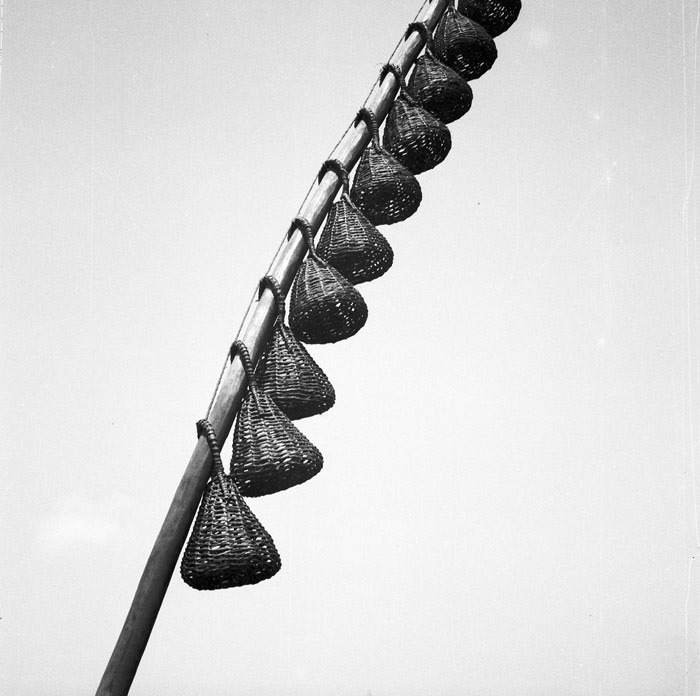
1998.349.20.1
Quill birds (aluru ) caged in baskets (sigol ) suspended on poles ( tal ). Their songs call their mates who are trapped for food
Evans-Pritchard, 1936
A range of other economic activities were also carried out. These included basket-weaving, pot-making, papyrus mat-making and collecting termites.
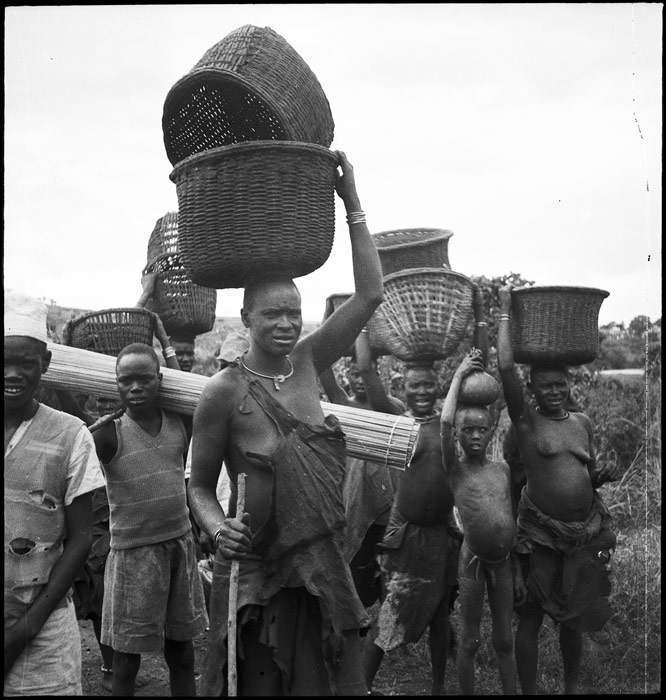
1998.349.210.1
Luo women and children with baskets and pots on their heads and a roll of matting, probably coming or going from market
Evans-Pritchard, 1936
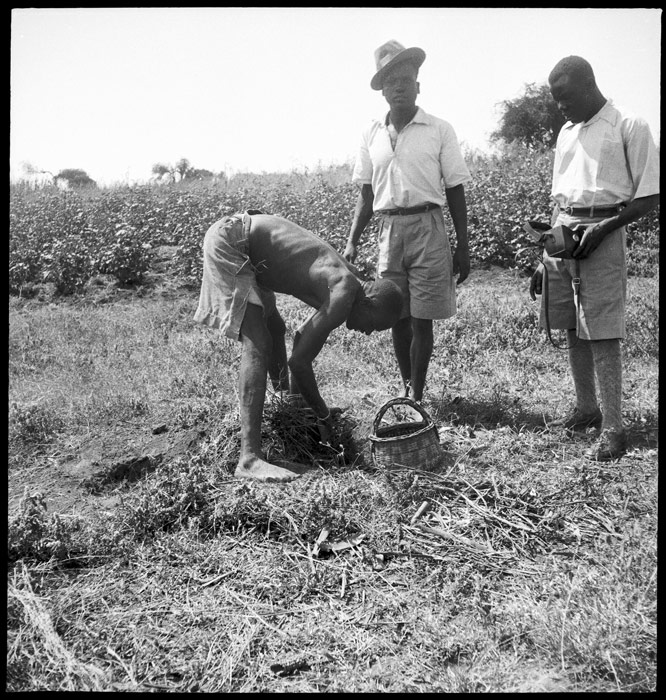
1998.349.197.1
Luo man harvesting a termite trap, used for feeding to chicks as well as alaru birds in basket cages.
Evans-Pritchard, 1936